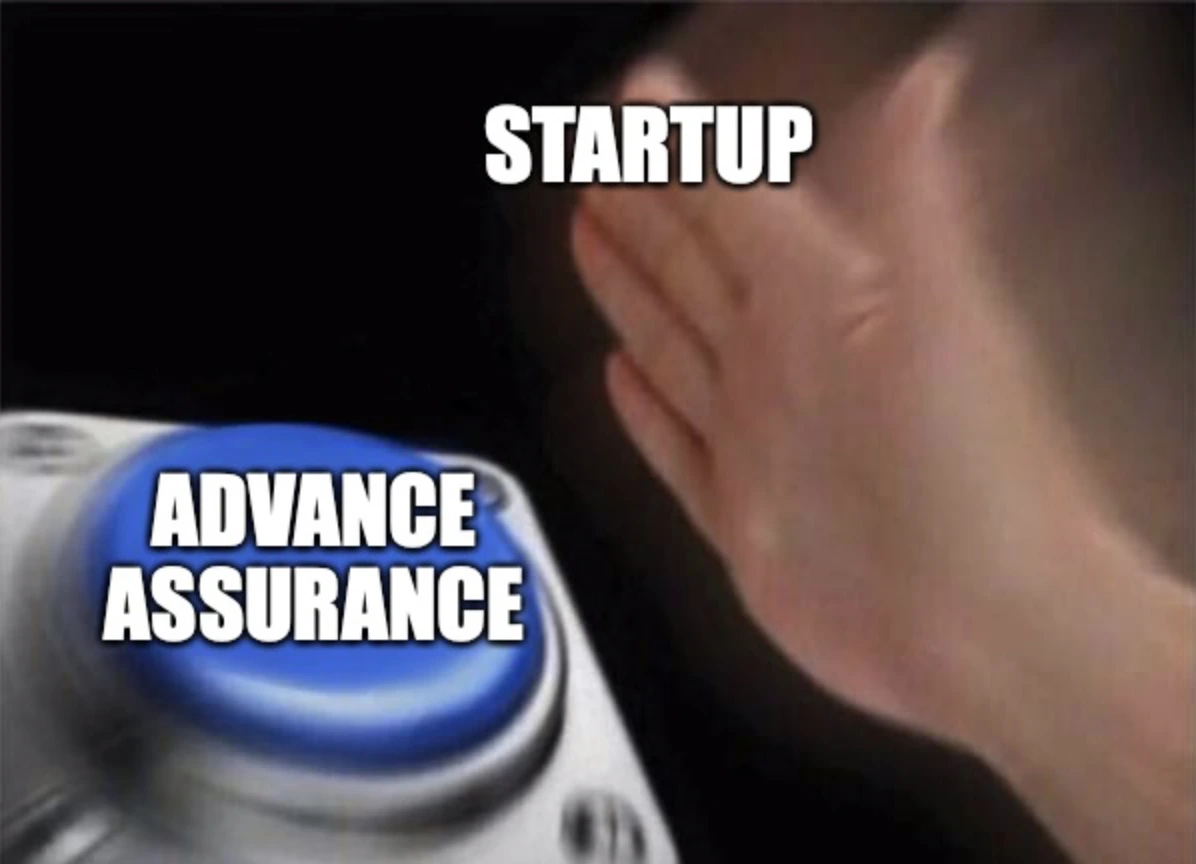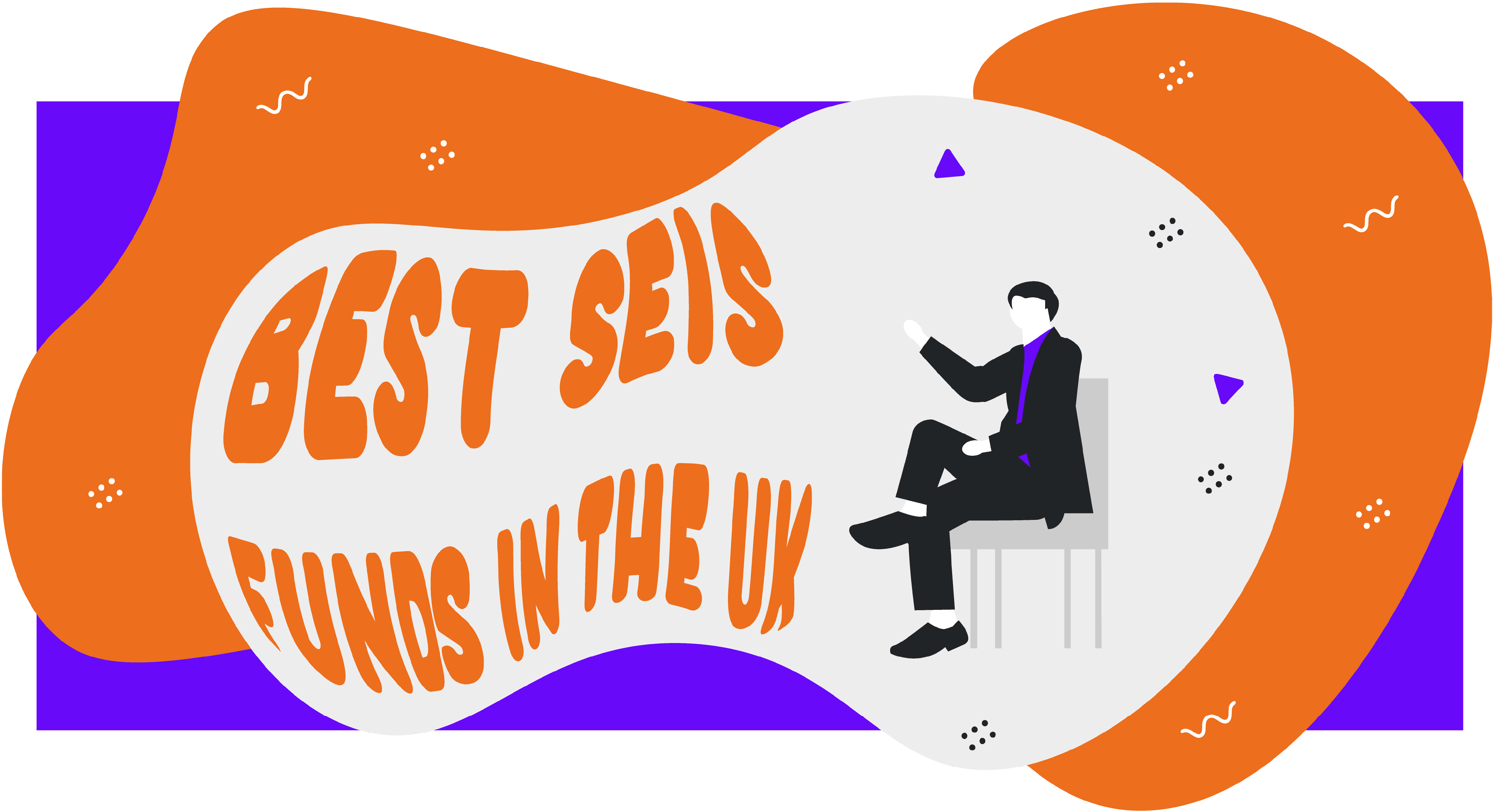What is the Enterprise Investment Scheme (EIS)?
what an EIS investment is and the guidelines behind the scheme
In this blog post, we outline the UK government’s Enterprise Investment Scheme (EIS), how it works and how to check if your business is eligible for it.

Table of contents
- Introduction
- Is my business eligible for EIS?
- What companies are excluded from EIS?
- What are knowledge-intensive companies?
- What is Advance Assurance?
- What do I need to apply for Advance Assurance?
- What happens after I’ve applied for Advance Assurance?
- How to submit a compliance statement
- What happens after you’ve submitted your compliance statement?
- Gross assets
- When can I do with the money raised?
- What are the limits on money raised?
- Age limits for your business
- What are qualifying subsidiary companies?
- Meeting the risk to capital condition
- How do I issue shares?
- Information for investors
- Conclusion
The UK government introduced the Enterprise Investment Scheme (EIS) in 1994, but what is it? EIS was launched to help small, established businesses grow and raise funds. A range of tax relief is also offered to investors who purchase new shares in these companies. A business using Enterprise Investment Schemes can raise up to £5 million yearly. They can also raise up to a maximum of £12 million in their lifetime. These limits apply to any amount a business would get from other venture capital schemes.
It's essential to understand what an EIS investment is and the guidelines behind the scheme, as only a certain number of businesses are eligible. Tax reliefs will be withheld if you cannot adhere to the guidelines for two years after investing. Further information regarding EIS will be explained throughout this blog post.
Is my business eligible for EIS?
You must ensure that your business qualifies for EIS and the necessary funding. It will do so if any of the following apply:
- It was founded and is currently based in the UK
- It has less than 250 full-time employees
- It does not have gross assets worth more than £15 million before shares are issued
- It is not trading on a stock exchange at the time the shares are issued
- It does not control another company other than qualifying subsidiaries
- It is not controlled by another company or has 50 per cent of its shares owned by another company
- It will not close after completing a project or series of projects
Your business must also carry out a qualifying trade, or if you're part of a group, most of the group's activities must be qualifying trades. You can also ask HMRC (His Majesty's Revenue & Customs) if your share issue will be eligible as an Advance Assurance. If your business owns subsidiaries, they will not be eligible for EIS; only the holding company will be.
Which companies are excluded from EIS?
If you are looking to apply for EIS, you must ensure your business does not fall into the categories of “excluded trades”, as outlined by HMRC. You will not qualify if a “substantial” proportion of your trading activities falls into one of the below categories. These include the following:
- Banking, insurance or money-lending
- Dealing in land or commodities
- Property development
- Generating or exporting electricity
- Legal or accountancy services
The complete list of “excluded trades” is available on the UK government’s website. If your company is not one of the listed “excluded trades” but provides support to one, you may still be eligible for EIS.
What are knowledge-intensive companies?
Knowledge-intensive companies refer to businesses heavily involved in innovative ideas - for example, a company developing a new treatment for an illness. Approved EIS funds for knowledge-intensive companies received approval from the Chancellor in 2020.
If you run a knowledge-intensive company and undertake significant research, then different rules apply regarding EIS. These guidelines apply specifically to knowledge-intensive companies looking to raise more than £12 million for the duration of their lifespan and who have received no investment under a venture capital scheme within seven years of their first commercial sale.
As a result of these rules, there are increased limits for investors. For instance, a knowledge-intensive EIS fund allows investors to set income tax relief against liabilities in the same tax year the fund closes. Or, they could "carry back" to the previous tax year.
Investors will need to receive their EIS5 certificate before they can claim EIS tax relief. The certificate will be sent once an investor has invested 90 per cent of its capital within 24 months of the close. Investors in non-approved funds will receive EIS3 certificates for each investee company.
The UK government's website has more information on the funds knowledge-intensive companies are entitled to. The fund must also comply with requirements set out by HMRC, or it could impact investor tax relief.
What is Advance Assurance?
HMRC often grants Advance Assurance if they agree with you an investment would meet the requirements of a venture capital scheme. In this context, Advance Assurance would be presented in a certificate, confirming the company's proposed share issue would qualify for EIS tax relief.
However, this does not necessarily mean that the company will automatically qualify for EIS tax relief - it will need to issue the shares before it can be confirmed. In addition, after a company has issued shares, it must submit a compliance statement to HMRC, regardless of whether it has applied for or received Advance Assurance. HMRC will then confirm if the company can issue EIS certificates.
What do I need to apply for Advance Assurance?
In order to apply for Advance Assurance for EIS, you will need to ensure you fulfil the criteria. You will need to provide the following:
- The date your company started trading
- The name, address and intended amount of investment from at least one potential investor. You only need to include this information if you haven’t previously received Venture Capital Scheme investment. The person you list does not have to be committed to invest, this is just required to prevent any misleading applications
- The details of any EIS investments you may have taken out previously
- A three-year business plan with a financial forecast. Your financial forecast should be for three years from the date of your application and show you need the investment
- Pitch deck. This can be the same one you may have previously shown potential investors
- Latest company bank statements or accounts
- Current company Memorandum and Articles of Association
- Your response to the risk to capital condition
In 2019, HMRC introduced a EIS Advance Assurance Checklist, which helps business owners ensure they have included the right information with their application. This checklist must be completed and submitted alongside the application form.

What happens after I’ve applied for Advance Assurance?
When your Advance Assurance application has been approved, you will have more opportunities to approach potential investors, knowing that their investment should qualify for EIS tax relief.
As a business owner, you have the ability to attend networking events for company founders and angel investors. However, once you have Advance Assurance, you should have more confidence that you can find an investor who is interested in your business. Friends and family can also use EIS to help invest in you, but there are restrictions if they are investors.
How to submit a compliance statement
You must submit a compliance statement application once you have issued shares to investors through EIS. A compliance statement is a statement or report signed by a qualified party confirming that the defined business or facility has met specific requirements as stated by the owner.
You can submit an EIS compliance statement form (EIS1) if you are a company secretary, director or agent. If none of these applies, you could find an agent to submit for you, but they will need to provide a letter confirming they are entitled to act on your behalf. This must be dated within the last three months from the application date.
You can only submit a compliance statement application after you have carried out your qualifying business activity for at least four months and have spent 70 per cent of the amount raised by the share issue. If there are multiple share issues, you will need to complete separate statements for each of them.
If you have Advance Assurance, you must provide copies of documents that may have changed since HMRC gave you this status. If you do not already have Advance Assurance, you will need to provide the following for your company and its subsidiaries when submitting an EIS compliance statement:
- Business plan
- Financial forecasts
- A copy of the latest accounts
- A brief explanation of how you meet the risk to capital condition
- Information on trading and activities and how much you will spend on these
- An up-to-date version of the memorandum and articles of association
- Information memorandum or other documents that explain the fundraising proposal to investors
- Details of other agreements between your company and the shareholder
- A list of the venture capital schemes you have previously received investment from, including the exact amounts and the dates these were issued
If you have additional documents to show you meet the conditions, then make sure to include these with your application. You can submit a compliance statement on the UK government's website.
What happens after you've submitted your compliance statement?
Once your compliance statement has been submitted, HMRC will evaluate it to ensure it is accurate and that the scheme's conditions have been met. If you have failed to meet their requirements, then HMRC will inform you of your rejection, outlining why this happened and how you can appeal the decision.
If HMRC agrees with your submission, then they will send you a letter of authorisation, a compliance certificate (EIS3) and a unique reference number. These will all need to be given to your investors. In addition, investors must be aware of your unique reference number as they must use this and the certificate to claim tax relief.
Gross assets test
As explained previously, you must ensure that your business has less than £15 million in gross assets to be eligible for EIS. The total value of the company assets will need to be calculated before EIS shares are issued. Your company assets include:
- Fixed tangible assets: equipment needed for your company, such as machinery, office supplies etc.
- Current assets: money or another asset that can be converted to funds during the same financial year
- Intangible assets: intellectual property when acquired by the company. This does not include patents and trademarks that are being developed by your business
EIS funds themselves will not count towards your current assets. However, funds from a non-EIS investor do. Therefore, you must ask standard investors to wait until EIS shares are issued before sending in their money.
What can I do with the money raised?
Any money raised by the new share issue through EIS can be spent on one of the following:
- A qualifying trade
- Preparing to carry out a qualifying trade. This has to start within two years of the investment
- Research and development that's expected to lead to a qualifying trade
There are some requirements regarding the money raised. It must:
- Be spent within two years of the investment, or if later, the date you started trading
- Not be used to buy all or some of another business
- Be used to grow or develop your business
- Pose a risk of loss to capital for an investor
What are the limits on money raised?
Your business is not allowed to raise more than £5 million in any 12-month period from the following schemes:
- Enterprise Investment Scheme
- Venture Capital Trusts (VCT)
- The Seed Enterprise Investment Scheme (SEIS)
- Social investment tax relief (SITR)
- State aid approved under the risk finance guidelines - you should check with whoever gave you the aid for further information
Your business is also not allowed to raise more than £12 million from these schemes in its lifetime. This includes money received from current and former subsidiaries and any businesses you have acquired.
Age limits for your business
You can only receive investment under EIS if it falls within seven years of your company's first commercial sale. If your business has any subsidiaries (and this includes former subsidiaries) or acquired companies, the date of your first commercial sale is the earliest of the group.
You could use EIS to raise money for the same activity if you received investment in this period under any of the schemes outlined in the previous section. However, you must show you were planning to do so in your business plan.
Suppose you cannot receive investment within the first seven years or now want to raise money for a different activity with a previous investment. In that case, you must prove that the funds will be used to enter a new product market or geographic market. You will also need to prove that you are looking for at least 50 per cent of your company's average annual turnover for the last five years.
What are qualifying subsidiary companies?
A subsidiary company is a business owned or controlled by another. Under EIS, any other companies you own must be 'qualifying subsidiaries'. This means that:
- Your business owns more than 50 per cent of the subsidiary's shares
- No one other than your company or one of its qualifying subsidiaries can control this specific subsidiary
- There are no arrangements which would put someone else or another body in control of this subsidiary
The subsidiary has to be 90 per cent owned by your business for the following:
- The business activity you are planning on spending the investment on is set to be carried out by the qualifying subsidiary
- The subsidiary's business is property or land management
Meeting the risk to capital condition
Any investment in your business has to meet the risk to capital condition, meaning you must intend to grow and develop the company trade and use the investment to help achieve this. The investment should also pose a risk to the investors' capital. The growth and development of your business should not always rely on support from an investor. It is also down to you to ensure your company will use the investments wisely.
One of the risks of the investment is investors losing more capital than they would be likely to gain as a net return. This is because the net return includes income from dividends, interest payments, capital growth and upfront tax relief. However, HMRC cannot declare the maximum return an investor could get if your business becomes successful, as this is only sometimes guaranteed.
HMRC will look at the following to determine if your business meets the risk to capital condition:
- Source of income
- Structure
- Assets
- Relationships with other companies
- Marketing of the investment opportunity
- Use of subcontractors
However, suppose there are risk-reducing arrangements in place that result in investors getting priority over others and being able to withdraw their money and protect. In that case, you will not meet the risk to capital condition.
Information for investors
What tax reliefs are EIS investors entitled to?For investors looking to buy shares to companies under EIS, they are entitled to the following four tax reliefs:
- Income tax relief: up to 30 per cent income tax relief on investments up to £1 million, while an additional £1 million is also available if invested in knowledge-intensive companies
- CGT disposal relief: any gain is free from Capital Gains Tax (CGT) as long as the investment will be held for at least three years
- Loss relief: if this needs to be claimed, you can select the loss of shares to be set against income tax from that year or the previous year
- CGT reinvestment relief: CGT is deferred if the gain is reinvested in EIS-qualifying shares
EIS, like most other investments, carry financial risks for the investors that they should be aware of. The value and income of these investments can rise or fall at any time, so investors should be aware as they could get back less than they invest. Smaller businesses are less fully developed than larger, more corporate companies and are more likely to fail. If this were to happen, investors might lose their investment's total value.
Investors should be aware that EIS investments are long-term, and you must be willing to agree to comply with them regularly over time. As a result, they are best suited for high-net-worth investors with no significant financial issues and can withstand a potential loss. EIS investments are also less liquid than other stock market investments, making them harder to sell.
When can an investor claim income tax relief?The investment date for tax purposes is usually determined by when shares are allotted. Once they have been allotted, an investor can claim income tax relief and receive an EIS3 certificate, which takes around six months to be produced. This process is slightly different for knowledge-intensive approved funds, and the tax relief, which they can claim for the tax year the fund is due to close, can only be claimed once they have received the EIS5 certificate. This can take up to 24 months after the fund closes.
How much can an investor invest in EIS?The maximum amount one can invest in EIS is up to £1 million per tax year, or £2 million if anything above £1 million is in 'knowledge intensive' investments. The minimum investment is usually around £10,000, but it depends on the investment manager. An investor would be unable to qualify for income tax reliefs on the excess, but they could still be eligible for capital gains deferral, as well as IHT relief. If possible, they could carry back the income tax relief to the previous tax year.
When are shares allotted?If an investor is investing through a portfolio, it can take between 12-18 months for EIS shares to be allotted. Meanwhile, single company EIS offers usually have a closing date. This can be when a fundraising target is met or on a specific date. Shares are allotted shortly after the offer closes. The date the shares are allotted will determine the investment date. For knowledge-intensive EIS funds, the investment date is when the fund will close.
What is "carry back"?EIS also offers a "carry back" option, which enables an investor to select some or all of their shares acquired in the same tax year to be treated as if they had been gained in the previous year. This allows them to offset the tax relief against the prior year's income tax. However, an investor can only do this if they have sufficient EIS allowance in the tax year they want to carry back.
Conclusion
We hope this has given you a better understanding of EIS and how you can use the scheme to raise funds for your business. Remember that EIS is not for everyone, so we advise you to only partake in the scheme if you know your business qualifies. Suppose your business is not eligible for EIS. In that case, other options are available, including SEIS and business loans and grants if you desire additional funding to help your company develop. We have written blog posts on all three of these options.
















